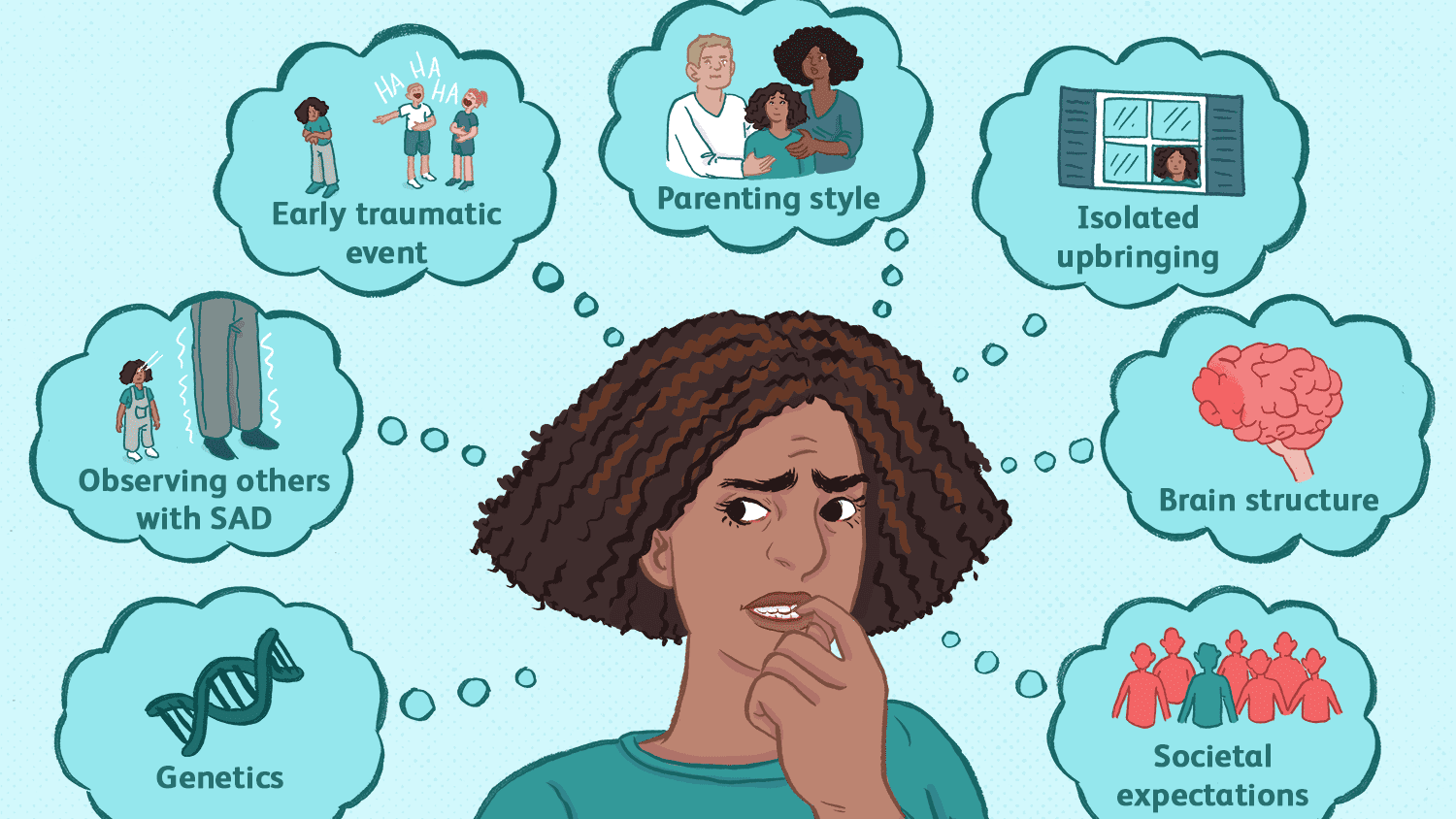The causes, symptoms and treatment for social anxiety
Omar Dajani. 01/08/2021
Many people are shy when it comes to social situations. They might feel hesitant to meet new people and feel overwhelmed by social gatherings such as parties. These feelings are completely normal, but they can reach a point of severity where they are not. Some people feel terrified of the mere idea of meeting new people, and they might completely avoid social gatherings as a result. These people likely have what is known as social anxiety disorder (SAD), which they can either be born with or develop over time.
Sometimes referred to as social phobia, SAD causes a plethora of irrational feelings for whoever suffers from it. People with the disorder realize a lot of their feelings are hyperbolic, but sometimes, they may feel powerless to do anything about how it influences their cognition towards the world. Although it was compared to shyness previously, SAD is far more damaging. It can seriously deteriorate someone’s relationship with themself, their family, friends, work and school.
With SAD impacting 7% of Americans (15 million of the overall population), a large number of people’s lives are negatively impacted due to the disorder. The high percentage indicates this is one of the most common mental disorders in America. With such prevalence, it is important to know some of the symptoms of SAD. This can help you assist someone who may have it, or even yourself. Some symptoms include trembling or shaking, rapid heart rate and dizziness. Those are just physical symptoms— some psychological ones include worrying deeply about social situations, concerning yourself with upcoming social activities days or weeks before they even occur and potentially using drugs to calm down any fear related to social contexts. These symptoms only become worse with the assumptions that the disorder gives you: that everyone notices everything you do and silently judges you at every chance they get. This can cause an unrelenting feeling of exhaustion for the person with SAD, so getting the proper support is in that person’s best interest.

Such a detrimental mental health disorder can develop in a variety of ways, all of which are shown in the illustration at the top of the article. The most common way to develop the disorder is by simply being born with it. If they are born with a specific set of genes, they may be more prone to SAD, especially if they have a relative with it. This also ties into the way the person’s brain is structured and how their neurotransmitters are balanced. A second way to get it is largely dependent on a variety of social situations. Did people make fun of you today? Do they constantly keep making fun of you? Does this get to you on an extremely personal level, so much so you evaluate your entire self-worth? If a person answers yes to these questions, as well as any other questions of that nature, there is a chance they have the disorder and should continue looking into these feelings. A third way to become socially anxious depends on your upbringing. If a person has extremely strict parents who strongly limit their opportunities to have social interactions or be in social situations, their experience when it comes to these two areas will be largely stilted, which may manifest into SAD when the person grows older.
How would a person go about getting the proper support? There is a multitude of ways, with one being a prescription medication. A wide variety of drugs can help lessen the impact SAD, but all medications have side effects, so the medication someone decides to use is largely dependent on the specific individual. Some examples of these drugs are Zoloft, Prozac, Cymbalta, Marplan, Tenormin and Valium.
Other ways to lessen the impact of SAD include psychotherapy, such as Cognitive Behavioral Therapy (CBT). This common treatment focuses on influencing your behaviors and thoughts in a positive way to stop negative emotions by using techniques, such as exposure, cognitive restructuring and social skills training. The first technique allows the person to practice being in social situations, the second involves evaluation of existing negative thoughts and the third deals with the improvement of several soft skills needed for a variety of social situations. The third technique is similar to the first but focuses on what a person would do rather than having them act on the spot. Social skills training is usually reserved for extreme cases of the disorder, so most people can be treated with just the first two techniques. There are other ways to counteract the impact of SAD, but these three techniques are the most well-known.
Even though it may seem difficult for a person to beat social anxiety, it is important to consistently receive treatment or support. The aforementioned treatment options have been proven to help lessen the control the disorder has on your life, and the positive outlook gained from undergoing one of the treatment options will only cause a ripple effect that is sure to expand into a higher self-esteem. As someone who had SAD myself and went to therapy for it, I can tell you that CBT has been of great help. If you have social anxiety or suspect that you may, I highly recommend that you look into receiving CBT and going from there. Social anxiety is strong, but you are stronger.
Cover Photo: (Nimble / Dribbble)

Omar Dajani is an international student from Jerusalem, Palestine. He is currently a sophomore at Fullerton College in California. He has a passion for English as well as Computer Science. He enjoys gaming, blogging, journaling, meditating, and going on walks. He intends on transferring to UC Berkeley for Fall 2021.
